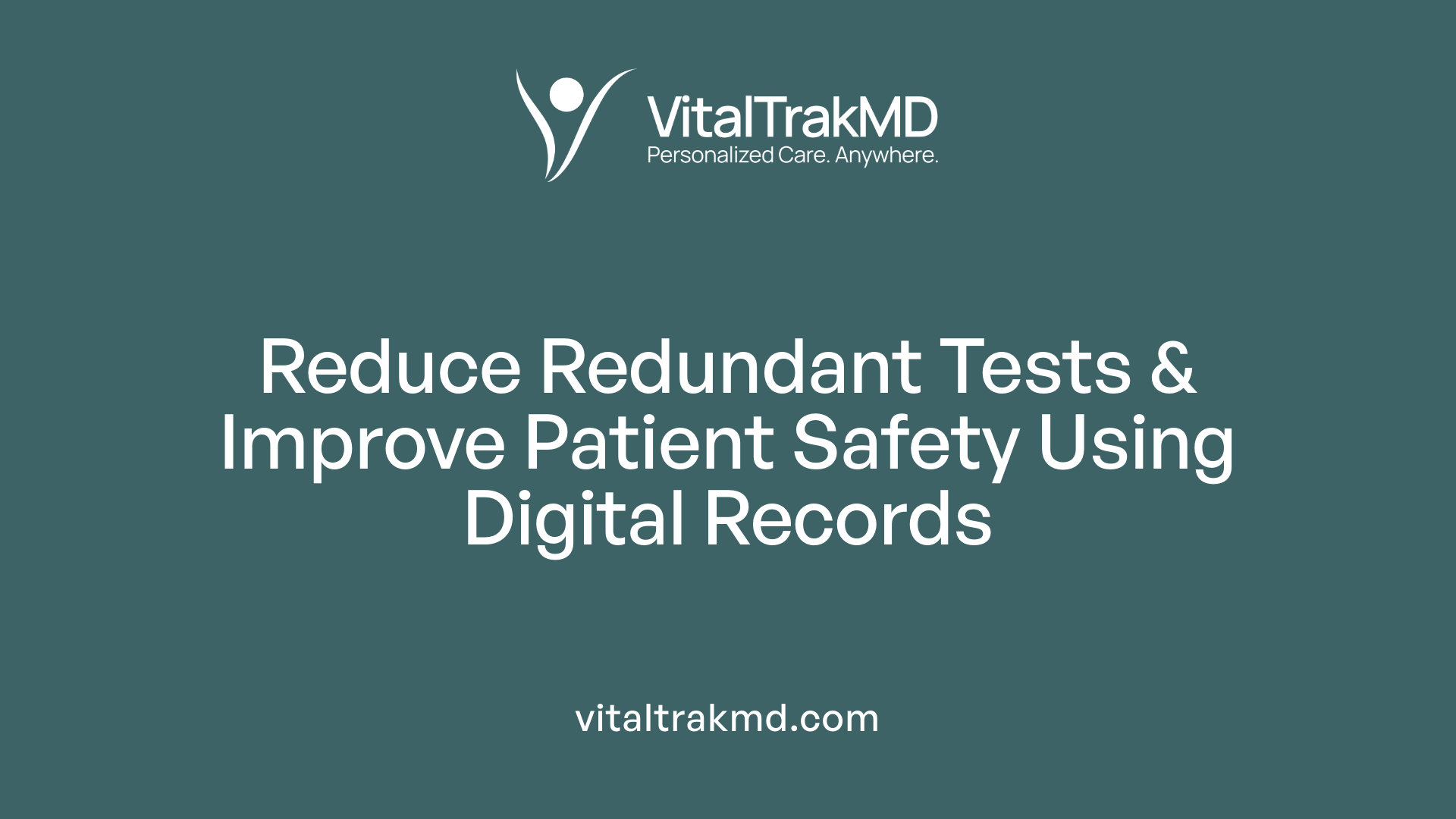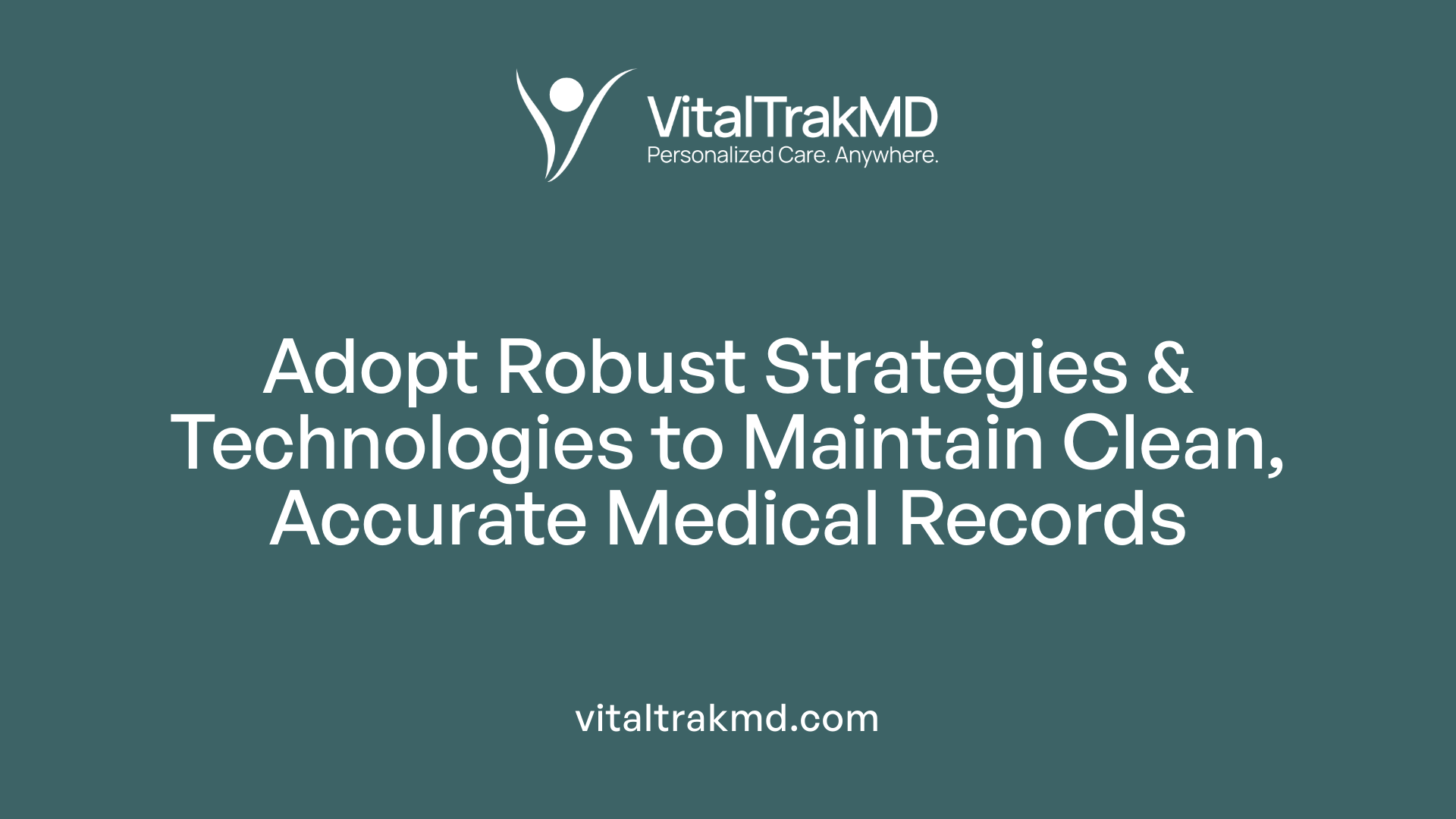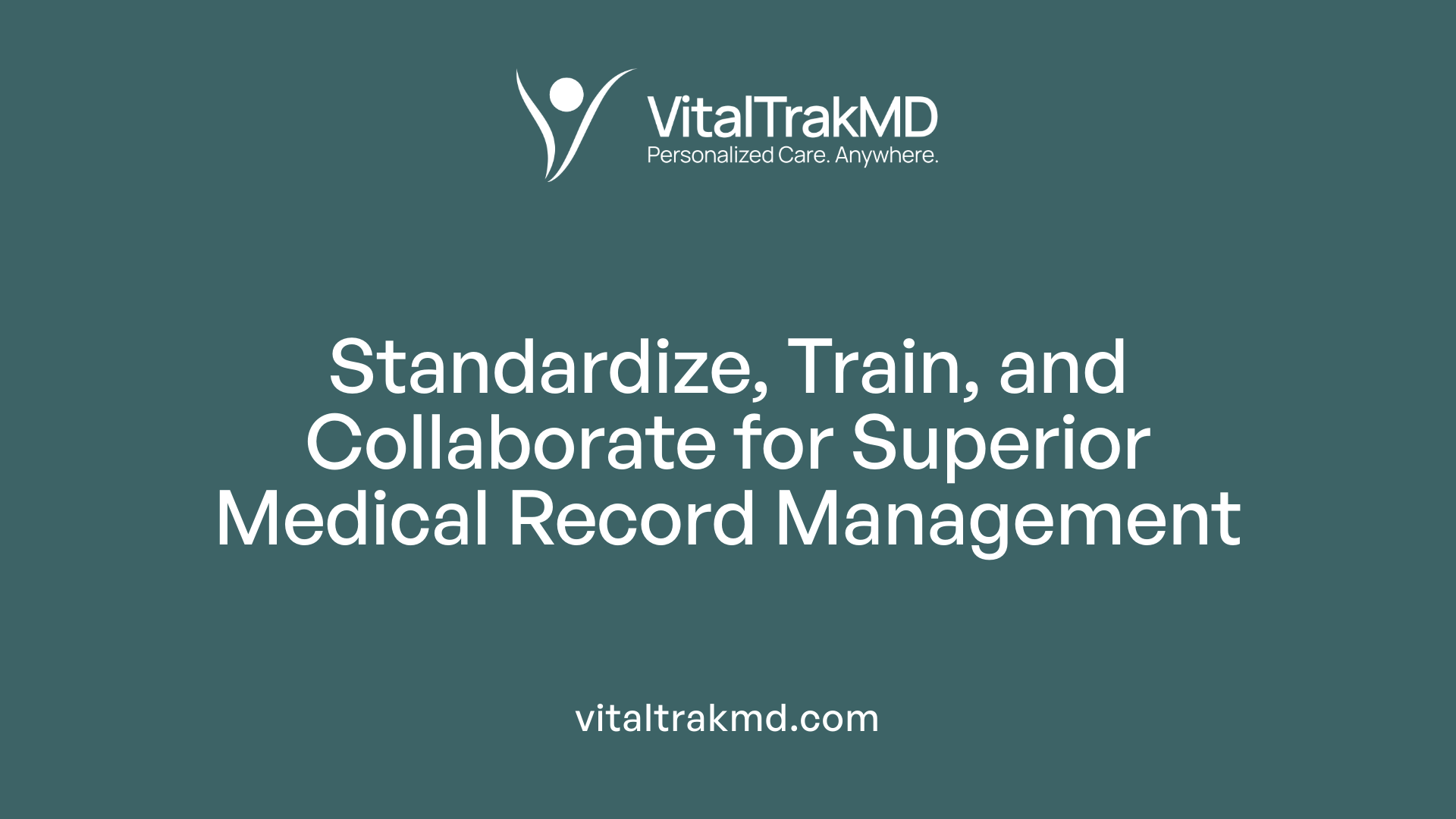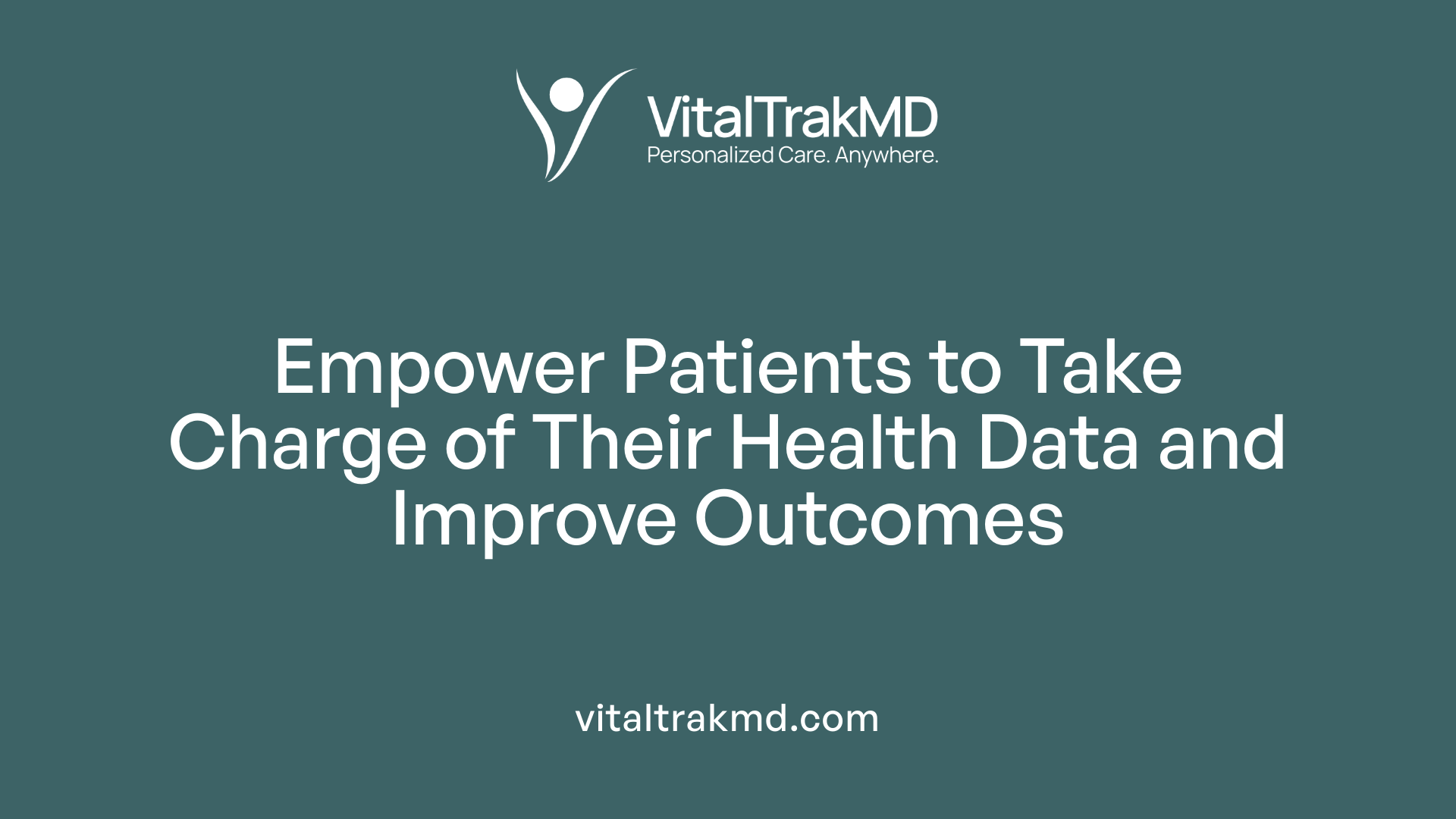Personalized Care: Avoid Repeating Your Medical History in Every Visit

The Shift Toward Personalized, Streamlined Care
Modern healthcare is rapidly evolving with the adoption of electronic health records (EHRs) and personal health records (PHRs). These technological advancements are reshaping how patients and providers manage health information, leading to more personalized, efficient, and safe healthcare experiences. This article explores how digital records minimize repetitive information sharing, enhance data accuracy, and uphold patient rights, ultimately improving the quality of care delivered.
How EHRs and PHRs Prevent Repetition of Medical History

How can electronic health records (EHRs) and personal health records (PHRs) help prevent the need to repeat medical history during healthcare visits?
Electronic health records (EHRs) and personal health records (PHRs) significantly improve the efficiency and accuracy of healthcare by providing immediate access to complete and organized medical data. When healthcare providers can review a patient’s information such as allergies, medications, past illnesses, and treatments in real time, they do not need to rely on the patient to recall details, which can often be incomplete or inaccurate.
These digital tools help reduce redundant testing and unnecessary repetition of medical history, saving both time and resources. For instance, if a patient’s allergies or previous diagnoses are clearly documented in an EHR or PHR, providers can make informed decisions swiftly without repeating allergy tests or diagnostic procedures. This minimizes discomfort for patients and avoids potential risks associated with unnecessary procedures.
A vital aspect of these records is their capacity for continuous updates. PHRs, managed by individuals, enable patients to track their health data over extended periods, ensuring their records are current and comprehensive. When shared with new or different healthcare providers, these records facilitate immediate understanding, leading to more accurate diagnoses and appropriate care plans.
Furthermore, EHRs and PHRs support seamless communication among multiple healthcare providers, which is essential in today’s complex healthcare landscape. When hospitals, primary care physicians, specialists, and labs can access and update the same records, they can coordinate efforts effectively. This interoperability ensures that everyone involved in a patient’s care has the latest information, reducing the likelihood of conflicting treatments or overlooked health issues.
In summary, the use of EHRs and PHRs ensures that medical history is easily accessible, up-to-date, and comprehensive, decreasing the need for patients and clinicians to revisit past details repeatedly. This integration promotes a smoother, more efficient healthcare experience, ensures patient safety, and supports high-quality care outcomes.
Benefits of electronic health records and personal health records in healthcare
| Aspect | Description | Benefit |
|---|---|---|
| Access to comprehensive data | Centralized collection of medical history, medication lists, allergies, test results | Easier, quicker review of a patient’s health for accurate decision-making |
| Real-time updating | Continuous data entry and sharing among providers and patients | Ensures information is current, reducing errors and omissions |
| Reduction of redundant procedures | Prevention of repeated tests and screenings | Saves time, lowers costs, minimizes patient discomfort |
| Coordination among providers | Sharing records across different healthcare entities | Promotes cohesive, informed care and avoids conflicting treatments |
| Patient empowerment | Ownership and management of personal health info | Encourages active participation in health management |
Why are organized and up-to-date records critical?
Having all health information in one accessible place helps during emergencies and routine visits. It enables healthcare providers to quickly understand the patient’s medical background, supporting timely intervention and better clinical decisions.
Additionally, comprehensive records reduce the risk of medical errors caused by incomplete information, such as medication interactions or missed diagnoses. As healthcare continues to evolve towards more personalized and data-driven practices, the importance of reliable, accessible health records becomes even more vital.
In the broader scope, digital health records also empower patients by giving them control over their health data, allowing them to decide what information to share, with whom, and under what circumstances. This transparency fosters trust and promotes better health outcomes.
In conclusion, effective use of EHRs and PHRs transforms the healthcare landscape by not only preventing unnecessary repetition of medical history but also enhancing overall quality, safety, and patient engagement in health management.
Preventing Duplicate Records and Ensuring Data Integrity

What strategies can be used to prevent the duplication of a patient's electronic medical record?
Effective management of electronic health records (EHRs) is crucial for providing accurate, complete, and reliable patient information. One of the main challenges faced by healthcare organizations is the occurrence of duplicate records, which can lead to medical errors, delays in care, and added administrative burden.
A key approach to preventing duplication begins with meticulous verification during the registration process. Healthcare providers should implement thorough identity verification procedures, including multiple data points such as full name, date of birth, social security number, and other demographic details. Using detailed registration forms and search protocols helps identify existing records before creating new ones, minimizing the chance of duplicates.
The use of unique identifiers, such as biometric data or barcodes, plays a vital role in enhancing record matching accuracy. These identifiers are less susceptible to common issues like misspellings or data entry errors and can significantly reduce reliance on demographic data alone.
Interoperability among different healthcare systems is essential to maintaining comprehensive and consistent records. Implementing standardized data formats and communication protocols—like HL7, DICOM, and FHIR—facilitates seamless data exchange, reducing discrepancies and overlapping entries.
Routine data audits and quality assurance measures are also fundamental components of a robust record management system. Regularly reviewing and cleaning data helps identify and merge duplicate records promptly. Advanced algorithms using artificial intelligence and machine learning can analyze large datasets to detect potential duplicates and overlays, offering a practical solution especially in the absence of a national patient ID system.
Stakeholder involvement enhances these efforts. Engaging healthcare providers, administrative staff, vendors, and patients ensures that everyone understands the importance of accurate data entry and diligent record keeping.
Despite ongoing challenges, technological advancements provide promising solutions. AI-powered data cleaning tools can analyze electronic records, identify patterns, and consolidate duplicate information. This approach is especially important given that recent studies have shown a high prevalence of duplicate content—over 50%—within aggregated clinical documentation, which can cause significant clinical and administrative issues.
In summary, preventing duplicate records involves a combination of thorough verification during registration, employing unique identifiers, ensuring system interoperability, and conducting routine data audits. Integrating these strategies results in more accurate, reliable, and useful medical records, ultimately improving patient safety and healthcare quality.
| Strategy | Implementation Details | Expected Benefits |
|---|---|---|
| Verification during registration | Use of detailed forms, multiple identity checks | Reduces initial duplicate entries |
| Use of unique identifiers | Biometrics, barcodes, or other ID methods | Improves record matching accuracy |
| Interoperability among systems | Adoption of healthcare data standards (HL7, DICOM, X12) | Ensures seamless, comprehensive data exchange |
| Data audits and quality assurance | Regular review, AI-based duplicate detection | Maintains database integrity and accuracy |
Attempts to establish a centralized national patient ID are ongoing but limited by privacy and policy issues. Modern solutions rely on data cleaning, AI, and machine learning, which have shown promising results in reducing the prevalence of duplicate records in large healthcare datasets.
By applying these techniques, healthcare organizations can significantly improve data quality, leading to better clinical decision-making, reduced redundant testing, and enhanced patient safety.
Best Practices for Managing Medical Records

What best practices exist for organizing, managing, and sharing medical records to facilitate personalized healthcare and prevent unnecessary repetition?
Effective management of medical records is vital for providing personalized healthcare and avoiding redundant tests or treatments. Implementing structured, standard organization policies across healthcare facilities ensures consistency in how records are stored, accessed, and shared. Such policies should specify data entry protocols, update schedules, and access controls.
Regular data review processes are essential to maintain accuracy. Healthcare providers should routinely verify and update patient information, especially after appointments, hospitalizations, or when new data emerges. This helps ensure records reflect the most current health status.
Using advanced biometric recognition technologies, such as palm vein scans or fingerprint identification, has demonstrated success in reducing duplicate records and misidentification. Hospitals like Longmont United Hospital and Kern Medical have adopted these methods to safeguard data integrity.
Staff training plays a crucial role. Staff members must be trained in standardized procedures for verifying patient identities, including asking patients to spell their names and confirming legal identification documents. These steps minimize errors during registration and data entry.
Creating a dedicated data integrity team within the healthcare organization helps oversee data quality. Setting clear targets, such as aiming for zero avoidable duplicate records, guides ongoing improvement efforts.
Employing advanced management software solutions, like Auto-Steward, facilitates the consolidation and clean-up of digital records. Such tools can identify duplicates, merge related data, and maintain consistency across systems.
Collaboration with health information management teams ensures that data sharing protocols align with legal and privacy standards. These teams help develop interoperability strategies, enabling seamless data exchange across different healthcare providers.
By integrating these practices—strict policies, staff training, technological aids, and collaborative management—healthcare systems can significantly improve record accuracy. This leads to better patient care, efficient operations, and reductions in unnecessary procedures.
| Practice Area | Description | Notable Examples |
|---|---|---|
| Standardized Policies | Establishes consistent procedures for data entry and sharing | Healthcare organizations nationwide |
| Staff Verification Methods | Uses standardized identity verification during registration | Longmont United Hospital, Kern Medical |
| Advanced Management Software | Software solutions for data cleaning and de-duplication | Auto-Steward, health info MGMT teams |
| Technology Integration | Uses biometric recognition for accurate patient identification | Hospitals employing biometric tech |
| Continuous Training | Regular staff training on data accuracy and security | All patient-facing healthcare staff |
| Data Integrity Oversight | Dedicated team overseeing data quality and policy adherence | Healthcare quality improvement teams |
This comprehensive approach ensures that patients' health records are accurate, up-to-date, and accessible, facilitating personalized, safe, and effective care while minimizing redundant procedures and errors.
Empowering Patients Through Active Record Engagement

How frequently should patients update their medical history with healthcare providers?
Staying current with health information is crucial for effective medical care. Patients are encouraged to review and update their medical records regularly to ensure that healthcare providers have the latest data. Typically, updates should be made at each medical or dental appointment, especially if there have been any changes such as new illnesses, medications, allergies, or treatments.
In addition to visits, significant health changes or new diagnoses warrant immediate updates to the medical record. An annual review is also recommended to capture any overlooked developments, assess ongoing health risks, and refresh preventive care strategies.
Using digital tools, such as patient portals, makes this process simpler. Patients can log in at their convenience to update their health information, upload new test results, or add recent health events. This approach not only keeps the data accurate but also minimizes errors caused by manual entry or misremembered details.
Keeping medical records up-to-date is vital for personalized care. It enables healthcare providers to tailor treatments effectively, avoid harmful medication interactions, and anticipate possible health complications. Moreover, real-time updates can facilitate better communication during emergencies, streamline appointment preparations, and support ongoing health management outside of clinical settings.
Use of digital tools and portals
Modern technology offers numerous platforms for patients to maintain and manage their health data actively. Patient portals connected to healthcare systems allow easy access to lab results, medication lists, immunization records, and provider notes. Some portals even enable direct message communication with healthcare teams, appointment scheduling, and the uploading of health information from home-monitoring devices.
Apps and online platforms often feature reminders for upcoming appointments or screenings, encouraging routine updates. These tools foster a sense of control and engagement, making it easier to participate actively in one’s health management.
Preparing for appointments with current data
Prior to seeing a healthcare provider, reviewing and updating your health records can lead to more meaningful and productive visits. Confirm the accuracy of medications, note recent symptoms or health changes, and bring any new test results or relevant documents.
Having a comprehensive and current health record helps clinicians make informed decisions quickly, reduces the need for repetitive questions, and streamlines the care process. It also ensures that preventive care, screenings, and follow-up plans are based on the latest information.
Benefits of up-to-date health information
Maintaining current medical records offers multiple advantages. It improves patient safety by preventing medication errors and duplicate testing.
Up-to-date records support better communication across providers and settings, aiding in coordinated care.
Electronic health documents that are current help to reduce healthcare costs by minimizing unnecessary procedures and hospitalizations.
In emergencies, quick access to recent health data, including allergies and critical conditions, can be lifesaving.
Furthermore, regular updates empower patients, fostering more active participation in their healthcare journeys. This engagement leads to better health outcomes, greater satisfaction, and a stronger partnership with healthcare providers.
| Aspect | Importance | Description |
|---|---|---|
| Regular updates | Ensuring accuracy | Update at every visit or when health status changes |
| Digital tools | Ease of management | Use portals, apps, and online platforms |
| Appointment prep | Informed decisions | Review recent data before visits |
| Benefits | Enhanced care | Safer, coordinated, cost-effective, personalized |
Through consistent engagement and the use of modern digital tools, patients can take charge of their health data actively. This approach ensures their medical records serve as a reliable, comprehensive foundation for better healthcare decisions and outcomes.
Legal Rights and Policies Supporting Access and Control of Medical Data
What legal protections and policies enable patients to access, control, and manage their medical records?
Patients’ rights regarding their health data are strongly supported by national legal frameworks designed to promote transparency, privacy, and patient empowerment. The cornerstone of these protections in the United States is the Health Insurance Portability and Accountability Act (HIPAA), particularly its Privacy Rule. This regulation grants individuals the enforceable right to view and obtain copies of their protected health information (PHI) maintained by healthcare providers, health plans, and other covered entities.
HIPAA's provisions ensure that patients can access their medical records in both electronic and paper formats. If health data is stored electronically, patients can request it in their preferred format, provided it is readily available. This policy fosters a sense of ownership and control, allowing individuals to review their history, confirm its accuracy, and participate actively in healthcare decisions.
Furthermore, under HIPAA, healthcare providers and insurers are required to respond to such requests within a strict timeframe—generally within 30 days of receipt. This response period can be extended by an additional 30 days under certain circumstances, but the obligation remains to provide timely access.
In addition to response times, HIPAA mandates that access should not be unreasonably hindered through procedural barriers. Patients can also request that their health records be sent directly to third parties, such as another doctor or family member, enhancing continuity of care.
Legal protections also stipulate that patients cannot be denied access based on certain types of information, like psychotherapy notes, or if disclosures could be legally restricted. These rules aim to balance individual rights with privacy and security considerations.
Overall, these policies are designed to promote a transparent healthcare environment where patients wield control over their personal health information, leading to increased trust, better engagement, and improved health outcomes.
Response time and data formats
HIPAA requires covered entities to respond promptly, ideally within 30 days, to any request for medical records. They must verify the requestor’s identity reasonably to prevent unauthorized access. When delivering records, providers should furnish the information in the format requested by the individual—be it electronic or paper—if it is easily producible. If records are electronic, a common format like PDF or AIFF is typically used.
Revisions introduced by the 21st Century Cures Act favor the use of secure Application Programming Interfaces (APIs), allowing patients to connect their health data to third-party applications effortlessly. This approach encourages interoperability and makes access more flexible and user-friendly.
Security and confidentiality measures
Protecting patient information is essential. HIPAA mandates stringent security standards for electronic data, including the use of encryption, secure login procedures, and access controls to restrict data to authorized individuals only. Patients also retain control over permissions—deciding who can view, modify, or share their records.
Accountability measures include logs of all accesses and modifications, which are visible to patients and help prevent unauthorized use. Patients can annotate or challenge interpretations of their data, with proper authentication ensuring that all activities are secure.
Flexible sharing options enable patients to specify whether parts of their records are open to research or shared with different providers, accommodating individual privacy preferences. These provisions foster trust and ensure that sensitive information, such as psychiatric notes or legal records, can be restricted when desired.
Overall, policies and technological safeguards are in place to uphold privacy, prevent data breaches, and empower individuals with ownership and control over their health information.
| Aspect | Policy/Standards | Details |
|---|---|---|
| Legal right to access | HIPAA Privacy Rule | Grants rights to view and copy PHI upon request |
| Response timeframe | HIPAA | Usually within 30 days; possible 30-day extension |
| Formats of records | HIPAA, Cures Act | Must accommodate requested formats; electronic and paper |
| Security measures | HIPAA Security Rule | Encryption, secure login, access logs |
| Permissions and sharing | Federal and state laws | Customizable privacy controls, sharing restrictions |
| Accountability | Log recording, patient annotations | Ensures transparency and proper access |
More information can be found by searching 'Patient rights to medical records under HIPAA and related policies'.
The Role of Interoperability and Data Sharing in Quality of Care
What role does interoperability and data sharing practices play in reducing errors and streamlining medical record management?
Interoperability and data sharing are fundamental to creating a more efficient and accurate healthcare system. These practices enable different health information systems to communicate seamlessly, ensuring the swift and secure transfer of comprehensive patient data across various providers and settings.
When all relevant health information—such as lab results, medication lists, imaging, and clinical notes—is readily accessible in real time, healthcare providers can make more informed decisions. This reduces the chances of miscommunication, duplicated tests, and medications, which are common sources of errors. For example, if a patient's medication list is up-to-date and shared across providers, the risk of dangerous drug interactions decreases.
Standardized data formats play a crucial role in this process. Formats such as HL7, DICOM, and X12 are established standards that ensure clinical data is consistent, interpretable, and usable across different health IT systems. This uniformity allows for accurate data exchange regardless of the system or provider involved.
Enhanced data sharing also facilitates team-based, patient-centered care. When healthcare professionals have access to a full picture of a patient's health history, including allergies, previous surgeries, and ongoing treatments, they can avoid unnecessary or incompatible treatments, leading to better safety outcomes.
Moreover, interoperability minimizes reliance on manual procedures like transcribing records or relying on paper documents. This decreases errors attributable to human input and delays caused by incomplete records. Automated data exchange speeds up care workflows and improves accuracy.
In emergency situations especially, rapid access to up-to-date health data can be lifesaving. Patients or providers can instantly retrieve critical information, such as recent test results or current medication regimes, to guide immediate treatment decisions.
Overall, the integration of interoperable systems and standardized data formats directly enhances the quality and safety of patient care. It creates a cohesive environment where information is accurate, timely, and accessible—reducing errors, preventing overlaps, and streamlining management.
How does standardized data format improve healthcare information exchange?
Standardization ensures that all parties interpret and utilize shared data consistently. Whether exchanging imaging reports or clinical notes, formats like HL7 (Health Level Seven), DICOM (Digital Imaging and Communications in Medicine), and X12 (transactions for billing and claims) help maintain data integrity across different systems.
This uniformity supports clinical decision-making, research, and public health initiatives, as reliable and comparable information is essential for analysis and reporting. Hospitals, labs, and provider offices can communicate seamlessly, improving the continuity of care.
What are the benefits of enhanced coordination and safety achieved through data sharing?
Efficient data sharing improves coordination among healthcare providers, reducing fragmented care and unintentional omissions. Patients receive more cohesive management, which fosters better outcomes.
Safety benefits include early detection of potential adverse events, accurate medication reconciliation, and prevention of duplicate tests. For instance, access to a comprehensive medication list helps prevent medication errors such as allergic reactions or harmful drug interactions.
Furthermore, better communication leads to fewer medical errors, improved response times, and more personalized care plans tailored to the individual's complete health picture.
| Aspect | Benefit | Additional Details |
|---|---|---|
| Reducing errors | Safer medication and treatment | Access to full patient history prevents dangerous interactions |
| Streamlining management | Faster, more accurate clinical workflows | Automated data exchange reduces manual entry |
| Improved safety | Access to complete records during emergencies | Critical data available instantly |
| Standardization | Consistent interpretation of health data | HL7, DICOM, X12 ensure data compatibility |
| Enhanced care coordination | Multi-provider management | Clear data sharing reduces redundant testing |
More information about the impact of healthcare data sharing on patient safety
Investigating how healthcare data sharing influences patient safety reveals that systems employing rigorous interoperability standards are less prone to medical errors. They also support more comprehensive patient histories that improve diagnostic accuracy and treatment appropriateness. Ongoing efforts aim to expand these practices nationally, ensuring all providers can participate in safe, seamless information exchange.
Enabling Patients to Access and Use Their Health Data Effectively
How can patients access and utilize their health records effectively?
Patients today have multiple tools and rights that enable them to access and make the most of their health information. One of the primary methods is through patient portals, which are secure online platforms connected to healthcare providers. These portals can be accessed via smartphones, tablets, or computers, allowing patients to view their electronic health records (EHR), including medical history, medications, allergies, and recent test results.
Requesting copies of health records is straightforward. Patients can submit formal requests directly to their healthcare providers or use the designated features within patient portals. Thanks to regulations like the HIPAA Privacy Rule, individuals are entitled to receive their health information at little or no cost, in the format they prefer, whether electronic or paper.
Linking personal health devices to EHR systems enhances health management. Devices such as blood glucose monitors, wearable fitness trackers, or blood pressure monitors can upload data directly into the record. This continuous data flow provides a comprehensive view of health metrics, empowering patients to monitor conditions and share relevant information with doctors.
Reviewing health records before appointments helps patients prepare better. They can understand their diagnoses, see what treatments have been recommended, and track the progression of illnesses. Keeping informed supports better decision-making, adherence to treatment plans, and active participation in self-care practices.
Emerging policies and health IT standards, such as the 21st Century Cures Act and SMART on FHIR, have improved secure data sharing and interoperability. These frameworks enable seamless and safe exchange of health data across different systems and platforms, giving patients timely access to their information from multiple sources.
Overall, engaging with health data responsibly allows patients to coordinate their care more effectively, reduce redundancy in testing, and respond promptly in emergencies. The combination of modern digital tools, legal rights, and regulatory standards makes managing health information more accessible, understandable, and useful for everyone.
Use of patient portals and apps
Patient portals serve as a digital gateway, providing real-time access to your health records, appointment scheduling, medication lists, and direct messaging with healthcare providers. Many providers also offer mobile apps linked to these portals, making it convenient to manage your health on the go.
Requesting and downloading records
You can request your medical records through a formal process, often via a secure online portal or written request. Once received, most systems allow you to download your records in formats like PDF or electronic health record files, keeping your data organized and accessible.
Linking health devices and records
Connecting devices such as fitness trackers, blood pressure cuffs, or glucometers to your health record system helps gather comprehensive data. This continuous information offers insights into your health trends and aids healthcare professionals in making accurate diagnoses or adjustments.
Informed decision-making and self-care
Having easy access to your full health information fosters informed discussions with your healthcare team. It enables you to understand your health conditions better, adhere to treatment plans, and take proactive steps towards healthier living.
| Aspect | How It Helps | Additional Details |
|---|---|---|
| Patient Portals | Access to medical history, test results | Available on web and mobile apps |
| Record Requests | Obtain copies of health data | Can be done online or via written requests |
| Device Integration | Continuous health monitoring | Devices upload data directly into EHR |
| Data Review | Prepare for appointments | Track health trends and understand diagnoses |
| Secure Data Sharing | Ensures information flow | Based on standards like FHIR and HL7 |
| Policy Support | Protects patient rights | HIPAA and 21st Century Cures Act |
By leveraging these tools and understanding their rights, patients can play an active role in managing their health effectively, leading to better outcomes and a more personalized healthcare experience.
Harnessing Digital Records for Better Healthcare Outcomes
The integration of EHRs and PHRs signifies a transformative shift toward highly personalized healthcare. By facilitating seamless data sharing, ensuring legal protections, and empowering patients through access and management, these digital tools are breaking down barriers created by fragmented systems and repetitive processes. Looking ahead, ongoing improvements in interoperability, data quality, and innovative technologies will further enhance care coordination, reduce errors, and contribute to more efficient and patient-centered healthcare. Embracing these advancements not only benefits individual health outcomes but also advances the overarching goal of a safer, more connected, and effective healthcare system for all.
References
- Personal health records and patient portals - Mayo Clinic
- how to keep electronic medical records accessible but private - PMC
- Individuals' Right under HIPAA to Access their Health Information
- Securing Your Medical Records: Why It's a Game-Changer For ...
- Top 4 Reasons You Need A Personal Health Record | Datavant
- HHS Finalizes Historic Rules to Provide Patients More Control of ...
- Why Duplicate and Mismatched Patient Records Are a Bigger ...
- How to keep good clinical records - PMC
- A Lifetime Electronic Health Record for Every American - Third Way
Recent articles
Want to Feel Better and Live Healthier?
Join hundreds of patients taking control of their health with personalized care that fits their life – not the other way around.
Rated 4.8/5 by 32+ customers







